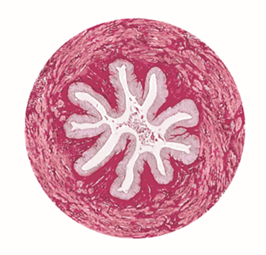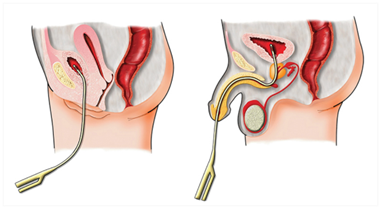Catheterization – It’s not so simple
Catheterizing in principle seems pretty simple and for many healthcare providers it is just that, simple, insert a catheter into a urethra until it reaches the bladder and then urine flows out. However, despite the simple sounding procedure, catheterization still remains a process that has many variables that can easily turn a simple process into a more difficult one.
Questions and concerns about instilling catheters have been regularly raised by nurses and physicians since the invention of the catheter. Some of this has do with the confidence and experience level of the healthcare practitioner with catheterization and some is related to the additional challenges in catheterizing certain types of patients or conditions (see figure 1):

Each of these patient types pose unique challenges and risks for catheterization, often requiring a urologist or an experienced urology nurse to manage these patients to minimize the risk of pain and injury.
Sometimes it just takes a quick review of the basics to improve a situation. One such basic is a reminder of what the urethra is and how we can take advantage of knowing this, to work with it to make catheterization easier and less painful.

At a base level the urethra functions like a tube which transports urine from the bladder to exit outside the body. The urethra is naturally closed, and the lining is composed of a continuous series of flattened folds with a basic structural similarity in males and females. The urethra only opens to allow voiding and thus catheterization is a forced dilation of the urethra which increases the risk of trauma to the lining as it opens the folds.1 The tissue lining the urethra is sensitive, rich in nerves and blood vessels and not very stretchable.4
Differences Between The Male And Female Urethra?

The male urethra is approximately 15 to 25 cm long and follows a path that curves around as it goes through the prostrate before it enters the bladder. This makes catheter insertion a little more difficult and makes it easier to cause injury when trying to push the catheter into the bladder.5
The female urethra is shorter (approximately 3-4 cm) and is mostly in a straight line to the bladder.6
A reminder of these two basic differences is important in ensuring that the correct length of catheter is selected to reach the bladder, as it is quite disconcerting to realize the catheter is too short after inserting it into the urethra and then having to remove and repeat the process with another longer catheter.
Use of a lubricating jelly or lubricating jelly with an anesthetic, can minimize the pain and reduce the risk of injury when catheterizing in both men and women.2,7
References
- Urinary Catheter Management, DAVID D. CRAVENS, M.D., M.S.P.H., and STEVEN ZWEIG, M.D., M.S.P.H., University of Missouri–Columbia School of Medicine, Columbia, Missouri, Am Fam Physician., 2000 Jan 15;61(2):369-376
- Clean Intermittent Urethral Catheterization in Adults, Canadian Best Practice Recommendations for Nurses, April 2020, Urology Nurses of Canada, https://unc.org/wp-content/uploads/2020/05/Clean-Intermittent-Urethral-Catheterization-Adults-for-Nurses-BPR-May2020-1.pdf
- Mary Wilson, Catheter lubrication and fixation: interventions, British Journal of Nursing, 2013, Vol 22, No 10 p 566-569
- Tzortzis et al, Intraurethral Lubricants: A Critical Literature Review and Recommendations, Journal of Endurology, Vol 23, Number 5, May 2009 p 821-826
- Male Urethra anatomy – Noah Schenkman Medscape, June 29, 2016, https://emedicine.medscape.com/article/1972482-overview#:~:text=The%20male%20urethra%20originates%20at,(see%20the%20image%20below).
- Female Urethra anatomy – Noah Schenkman, Medscape, June 27, 2016,https://emedicine.medscape.com/article/1972504-overview#a2
- Aygin D, Usta E, The effect of lubricants used in indwelling bladder catheterization through urethra on procedure-related pain: a literature review, Int J Clin Exp Med 2017;10(2):1995-2005, www.ijcem.com
- Uro Today, Diane Newman, Intermittent Catheters – complications – published URO-TODAY online – Mar 3, 2020
Catheterization Education and Difficult Catheterizations1-5
The use of urinary catheters is one of the most common procedures done in hospitals since up to 25% of inpatients are catheterized at any one time.1 Despite the frequency of this procedure physicians and nurses universally comment that the training and experience they got in medical school and in their workplace was not adequate, particularly when it comes to challenging patients.1,3,5
One of the most important things learned about catheterization is that regular educational sessions across departments will help to reduce the number of issues with catheterization, the number of calls for assistance for a difficult urological catheterization and the number of catheter related injuries that occur.1,2,3,5
Thus, regular catheterization education benefits patients and hospital staff alike as well as reduces the risk of injury and associated costs.1-5
For information concerning performing or teaching urinary catheterization, visit the Catheterization Education page.
References For Catheterization Education
- Bhatt NR, Davis NF, Thorman H, et al. Knowledge, skills, and confidence among healthcare staff in urinary catheterization. Can Urol Assoc J 2021;15(9):E488-94. http://dx.doi. org/10.5489/cuaj.6986
- Bhatt NR et al, A prospective audit on the effect of training and educational workshops on the incidence of urethral catheterization injuries, Cite as: Can Urol Assoc J 2017;11(7):E302-6. http://dx.doi.org/10.5489/cuaj.4271
- Manalo. et al, Medical interns’ knowledge and training regarding urethral catheter insertion and insertion-related urethral injury in male patients, BMC Medical Education 2011, 11:73, http://www.biomedcentral.com/1472-6920/11/73
- Hanson Z et al, Characteristics, Burden, and Necessity Inpatient Consults for Academic and Private Practice, Urology Health Services Research, Volume 139, P60-63, May 01, 2020, 2020DOI:https://doi.org/10.1016/j.urology.2020.02.016
- Bascu, Chasta et al, A prospective analysis of consultation for difficult urinary catheter insertion at tertiary care centres in Northern Alberta, CUAJ Sept-Oct 2013 Vol 7, issues 9-10
Difficult Catheterization2,4,5,6
Studies have found that difficult urinary catheterization are one of the most common reasons for a urinary consult and that this request for urology consults is increasing.2,4,5,6 The reasons for this seem to be related to physician/nurse reduced confidence in performing this procedure with certain patients which stems from inadequate training and experience with urinary catheterizations.4-6 In some instances, even physicians experienced with difficult catheterizations have trouble because of insufficient education on different approaches to different catheterization situations. To gain additional insights on dealing with difficult catheterizations we’ve provided some suggestions from various clinical articles that may help you to better understand and manage difficult catheterizations.
Suggestions on dealing with difficult catheterization can be found on the Catheterization Tips & Tricks – Male and Catheterization Tips & Tricks – Female pages
References For Tips and Tricks for Difficult Catheterization
- Carlos Villanueva, George P. Hemstreet III, Difficult Male Urethral Catheterization: A Review of Different Approaches, International Braz J Urol, Vol 34 (4):401;412, July-August, 2008, http://www.brazjurol.com.br/july_august_2008/Villanueva_ing_401_412.pdf
- Leon-Mata et al. Tips and Tricks for Difficult Urethral Catheterization. International Annals of Medicine. 2018;2(1). https://doi.org/10.24087/IAM.2018.2.1.396
- Cameron Ghaffary, et al, A Practical Approach to Difficult Urinary Catherizations, Curr Urol Rep (2013) 12:565-579 DOI 10.1007/s11934-013-0364-3
- Mario Gardi et al, The Challenge of Difficult Catheterization in Men: A Novel Technique and Review of the Literature, UroToday Int J. 2013 August;6(4):art 53, http://dx.doi.org/10.3834/uij.1944-5784.2013.08.12
- Alexa Bianchi; Stephen W. Leslie; Gregory T. Chesnut., Difficult Foley Catheterization, Oct 5, 2022, https://www.ncbi.nlm.nih.gov/books/NBK564404/
- Bascu, Chasta et al, A prospective analysis of consultation for difficult urinary catheter insertion at tertiary care centres in Northern Alberta, CUAJ Sept-Oct 2013 Vol 7, issues 9-10


 2476 Argentia Road, Suite 402
2476 Argentia Road, Suite 402 1.888.439.0013
1.888.439.0013 905.206.1413
905.206.1413 cathejell@biosyent.com
cathejell@biosyent.com